Dual-Channel CNN-Based Framework for Automated Rebar Detection in GPR Data of Concrete Bridge Decks
Abstract
1. Introduction
2. GPR Image Preprocessing
- Zero-time calibration: The ground-coupled antenna in a GPR system causes signal transmission delays and dielectric loading in the ground material, leading to a shift in the signal’s timing by a few nanoseconds. To accurately measure the wave velocity and depth of underground objects and perform migration, this time delay should be addressed. Time-zero offset is defined as the adjustment of time-domain GPR signals in which the first arrived reflection shifts to zero. According to references [3,20], we used 0.6 ns prior to the first negative peak of the received signal, and the rest of the signals are shifted accordingly. Figure 1b shows the B-scan after the zero-time offset.
- Background removal: In GPR images, the earliest arrivals correspond to direct waves from transmitter to receiver and reflected waves from the concrete surface. These strong reflections dim other features in the B-scan image, including rebar reflections. Since direct wave and surface reflection are repetitive along the scanning direction, a simple subtraction of the average of traces helps enhance the contrast of features and suppresses the effect of clutter. Figure 1c shows the GPR B-scan after background removal.
3. Rebar Detection Procedure
3.1. RoI Proposal
3.2. Convolutional Neural Network
4. CNN Models and Training
4.1. Training and Validation Data
4.2. CNN Models and Training Performance
5. Model Implementation Results
5.1. Bridge S075 17596
5.2. Bridge S077 05693R
5.3. Bridge S092 46282R
5.4. Performance Comparison
6. Conclusions
- Dual-channel input optimization The inclusion of migrated B-scans as a secondary input channel improves rebar detection performance. This is attributed to the complementary signatures of rebar reflections: hyperbolic patterns in raw B-scans and concentrated high-amplitude foci in migrated images. The CNN-2 model, trained on dual-channel data, outperformed the single-channel CNN-1 model across all evaluation metrics, particularly in achieving higher F1-scores, reflecting improved precision and recall.
- Robustness to structural degradation Bridge condition influences rebar detection reliability. CNN-2 demonstrates superior performance over CNN-1 on decks rated both “Fair” and “Poor” by NBI. In deteriorated (“Poor”-condition) decks, CNN-2 exhibits fewer missed rebars and reduced false positives compared to CNN-1, underscoring its robustness in handling structural degradation that complicates hyperbola morphology in raw B-scans.
- Limitations of single-channel training The CNN-1 model was trained on single-channel raw images only to identify hyperbolic features. While it can detect most rebars in bridges with limited deterioration, it is prone to false positives due to other hyperbolic patterns that resemble rebars. In bridges with poor deck conditions, the CNN-1 model misses many rebars and generates a high number of false positives. In contrast, CNN-2 significantly reduces false positives by using dual-channel inputs, producing amplitude maps that align more closely with the ground-truth maps.
- Generalizability across deck overlays The CNN-2 model was trained and validated on GPR data collected from a variety of in-service bridges, each with different overlay conditions: bare concrete, concrete overlay, and asphalt overlay. Field testing of the CNN-2 model demonstrates its reliability and accuracy in rebar detection. This approach reduces the need for manual processing, enhancing the efficiency of GPR-based bridge deck assessments.
Author Contributions
Funding
Institutional Review Board Statement
Informed Consent Statement
Data Availability Statement
Acknowledgments
Conflicts of Interest
References
- Wang, Z.W.; Zhou, M.; Slabaugh, G.G.; Zhai, J.; Fang, T. Automatic Detection of Bridge Deck Condition From Ground Penetrating Radar Images. IEEE Trans. Autom. Sci. Eng. 2011, 8, 633–640. [Google Scholar] [CrossRef]
- Dinh, K.; Gucunski, N.; Duong, T.H. An algorithm for automatic localization and detection of rebars from GPR data of concrete bridge decks. Autom. Constr. 2018, 89, 292–298. [Google Scholar] [CrossRef]
- Pashoutani, S.; Zhu, J. Ground penetrating radar data processing for concrete bridge deck evaluation. J. Bridge Eng. 2020, 25, 04020030. [Google Scholar] [CrossRef]
- Wong, P.T.-W.; Lai, W.W.-L. Characterization of Complex Dielectric Permittivity of Concrete by GPR Numerical Simulation and Spectral Analysis. J. Nondestruct. Eval. 2021, 41, 1. [Google Scholar] [CrossRef]
- Wang, Y.; Cui, G.; Xu, J. Semi-automatic detection of buried rebar in GPR data using a genetic algorithm. Autom. Constr. 2020, 114, 103186. [Google Scholar] [CrossRef]
- Ma, X.; Liu, H.; Wang, M.L.; Birken, R. Automatic detection of steel rebar in bridge decks from ground penetrating radar data. J. Appl. Geophys. 2018, 158, 93–102. [Google Scholar] [CrossRef]
- Park, S.; Kim, J.; Jeong, S.; Park, S. GPR Data-Based Computer Vision for the Detection of Material Buried Underground. In Proceedings of the 2019 3rd International Conference on Smart Grid and Smart Cities (ICSGSC), Berkeley, CA, USA, 25–28 June 2019; pp. 41–44. [Google Scholar] [CrossRef]
- Zheng, J.; Peng, S.-P.; Yang, F. A novel edge detection for buried target extraction after SVD-2D wavelet processing. J. Appl. Geophys. 2014, 106, 106–113. [Google Scholar] [CrossRef]
- Liu, Y.; Wang, M.; Cai, Q. The target detection for GPR images based on curve fitting. In Proceedings of the 2010 3rd International Congress on Image and Signal Processing, Yantai, China, 16–18 October 2010; Volume 6, pp. 2876–2879. [Google Scholar] [CrossRef]
- Lei, W.; Man, M.; Shi, R.; Liu, G.; Gu, Q. Target detection based on automatic threshold edge detection and template matching algorithm in GPR. In Proceedings of the 2018 IEEE 3rd Advanced Information Technology, Electronic and Automation Control Conference (IAEAC), Chongqing, China, 12–14 October 2018; pp. 1406–1410. [Google Scholar] [CrossRef]
- Dinh, K.; Gucunski, N.; Duong, T.H. Migration-based automated rebar picking for condition assessment of concrete bridge decks with ground penetrating radar. NDT E Int. 2018, 98, 45–54. [Google Scholar] [CrossRef]
- Park, S.; Kim, J.; Jeon, K.; Kim, J.; Park, S. Improvement of GPR-Based Rebar Diameter Estimation Using YOLO-v3. Remote Sens. 2021, 13, 2011. [Google Scholar] [CrossRef]
- Barkataki, N.; Tiru, B.; Sarma, U. A CNN model for predicting size of buried objects from GPR B-Scans. J. Appl. Geophys. 2022, 200, 104620. [Google Scholar] [CrossRef]
- Faris, N.; Zayed, T.; Fares, A.; Abdelkhalek, S.; Abdelkader, E.M. Automated rebar recognition and corrosion assessment of concrete bridge decks using ground penetrating radar. Autom. Constr. 2024, 166, 105631. [Google Scholar] [CrossRef]
- Asadi, P.; Gindy, M.; Alvarez, M.; Asadi, A. A computer vision based rebar detection chain for automatic processing of concrete bridge deck GPR data. Autom. Constr. 2020, 112, 103106. [Google Scholar] [CrossRef]
- Xiang, Z.; Rashidi, A.; Ou, G.G. An Improved Convolutional Neural Network System for Automatically Detecting Rebar in GPR Data. In Computing in Civil Engineering 2019; American Society of Civil Engineers: Reston, VA, USA, 2019; pp. 422–429. [Google Scholar] [CrossRef]
- Li, C.; Cai, N.; Pu, T.; Yang, X.; Liu, H.; Wang, L. Rebar Recognition Using Multi-Hyperbolic Attention in Faster R-CNN. Appl. Sci. 2025, 15, 367. [Google Scholar] [CrossRef]
- Pashoutani, S.; Zhu, J.; Sim, C.; Won, K.; Mazzeo, B.A.; Guthrie, W.S. Multi-sensor data collection and fusion using autoencoders in condition evaluation of concrete bridge decks. J. Infrastruct. Preserv. Resil. 2021, 2, 18. [Google Scholar] [CrossRef]
- Pashoutani, S.; Zhu, J. Real depth-correction in ground penetrating RADAR data analysis for bridge deck evaluation. Sensors 2023, 23, 1027. [Google Scholar] [CrossRef] [PubMed]
- Yelf, R. Where is true time zero? In Proceedings of the Tenth International Conference on Grounds Penetrating Radar (GPR 2004), Delft, The Netherlands, 21–24 June 2004; Volume 1, pp. 279–282. [Google Scholar]
- Garcia, D.; Tarnec, L.L.; Muth, S.; Montagnon, E.; Porée, J.; Cloutier, G. Stolt’s f-k migration for plane wave ultrasound imaging. IEEE Trans. Ultrason. Ferroelectr. Freq. Control 2013, 60, 1853–1867. [Google Scholar] [CrossRef] [PubMed]
- Girshick, R.; Donahue, J.; Darrell, T.; Malik, J. Rich Feature Hierarchies for Accurate Object Detection and Semantic Segmentation. In Proceedings of the 2014 IEEE Conference on Computer Vision and Pattern Recognition, Columbus, OH, USA, 23–28 June 2014; pp. 580–587. [Google Scholar] [CrossRef]
- Uijlings, J.R.R.; van de Sande, K.E.A.; Gevers, T.; Smeulders, A.W.M. Selective Search for Object Recognition. Int. J. Comput. Vis. 2013, 104, 154–171. [Google Scholar] [CrossRef]
- Deng, L. The MNIST Database of Handwritten Digit Images for Machine Learning Research [Best of the Web]. IEEE Signal Process. Mag. 2012, 29, 141–142. [Google Scholar] [CrossRef]
- Federal Highway Administration. Long-Term Bridge Performance (LTBP) Program InfoBridge. Available online: https://infobridge.fhwa.dot.gov/Data (accessed on 7 January 2025).
- Federal Highway Administration. Recording and Coding Guide for the Structure Inventory and Appraisal of the Nation’s Bridges; Technical Report FHWA-PD-96-001; U.S. Department of Transportation: Washington, DC, USA, 1995.
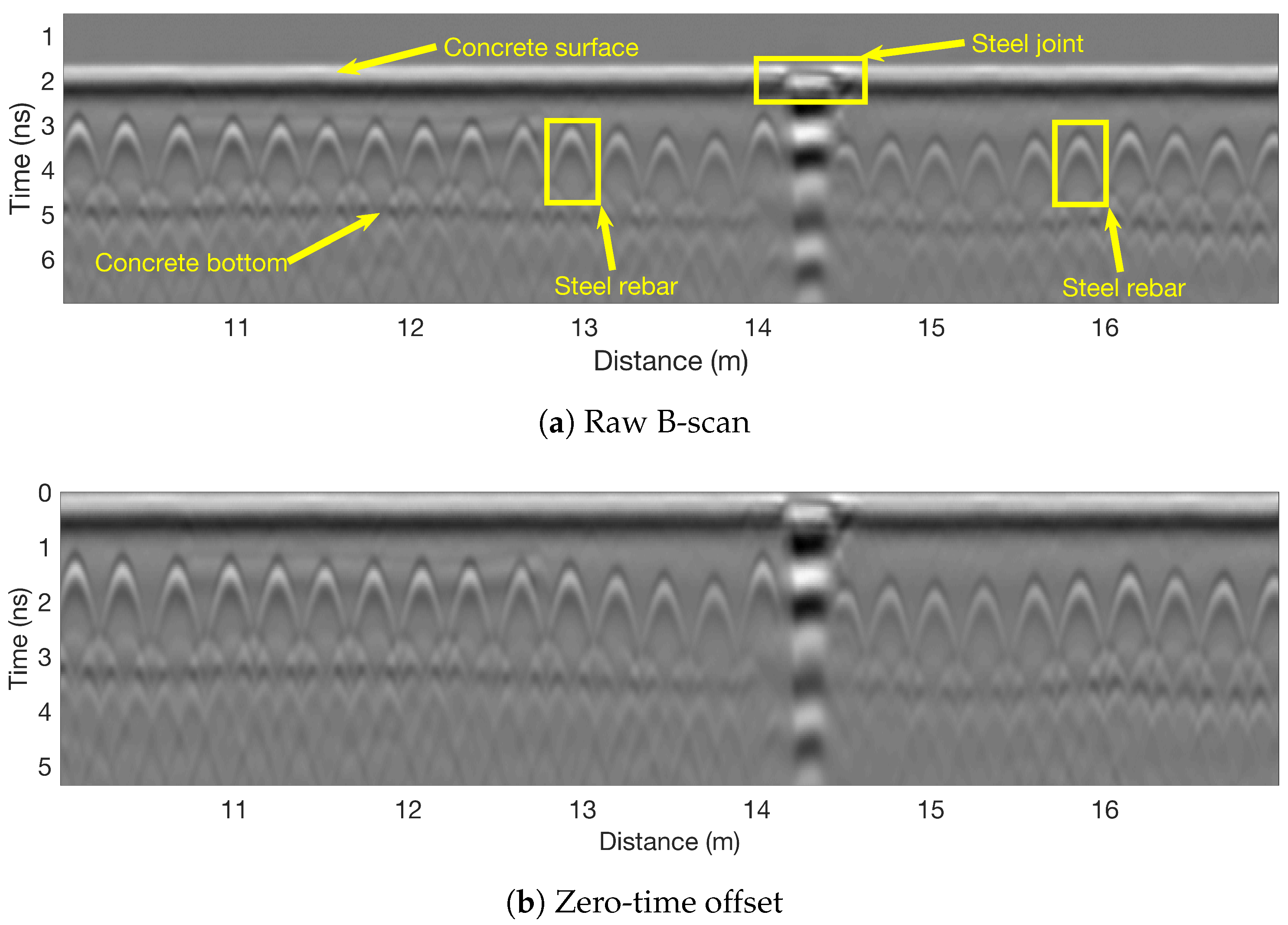
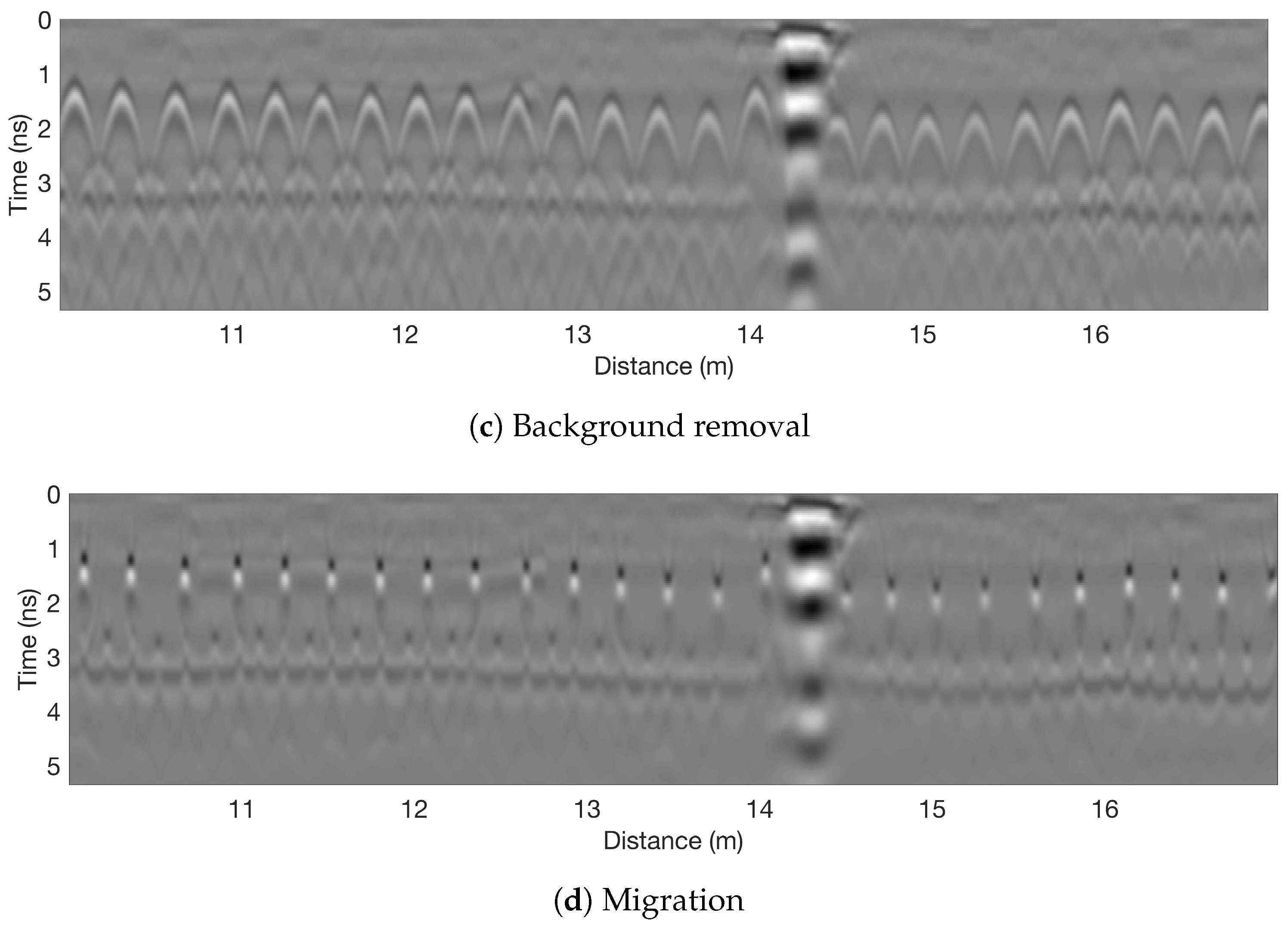
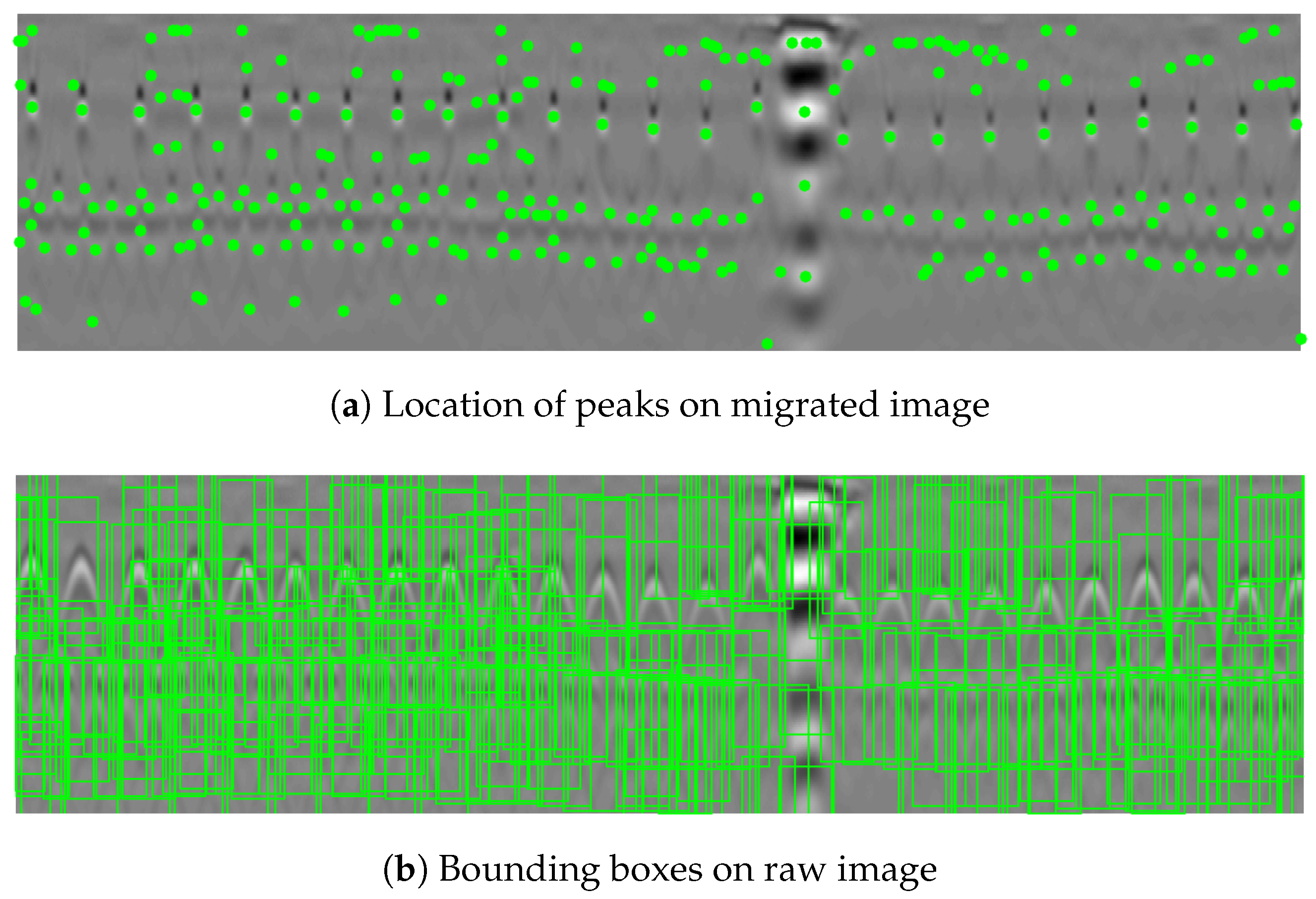

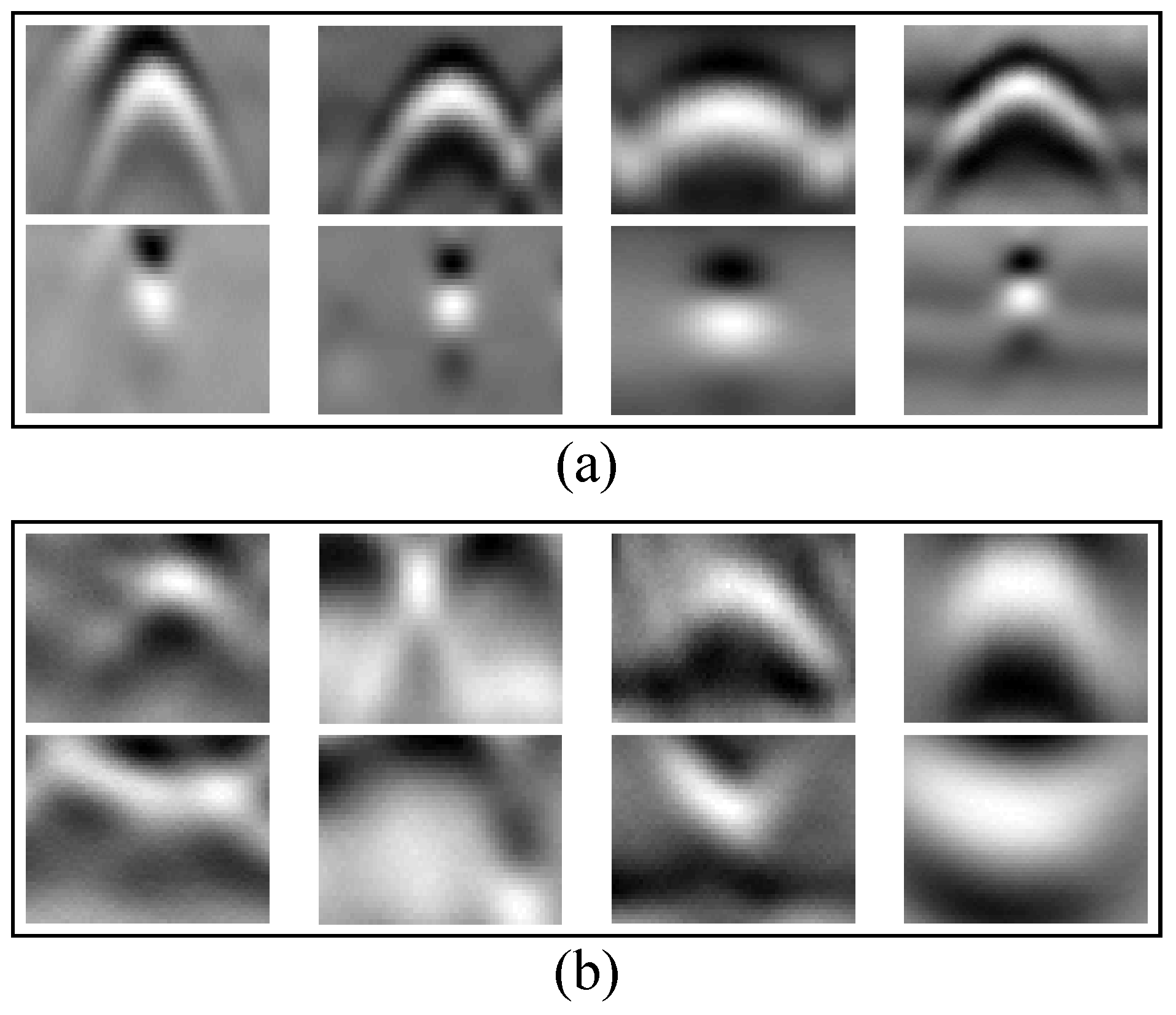

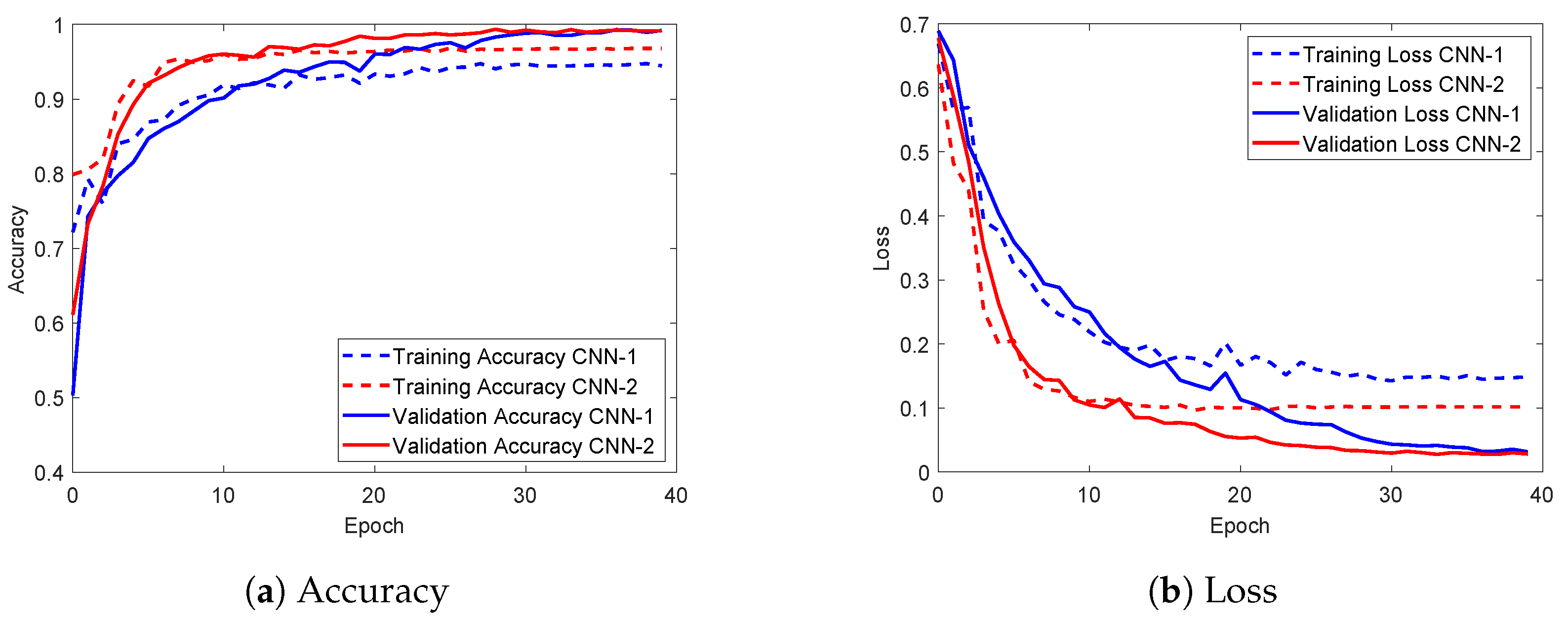
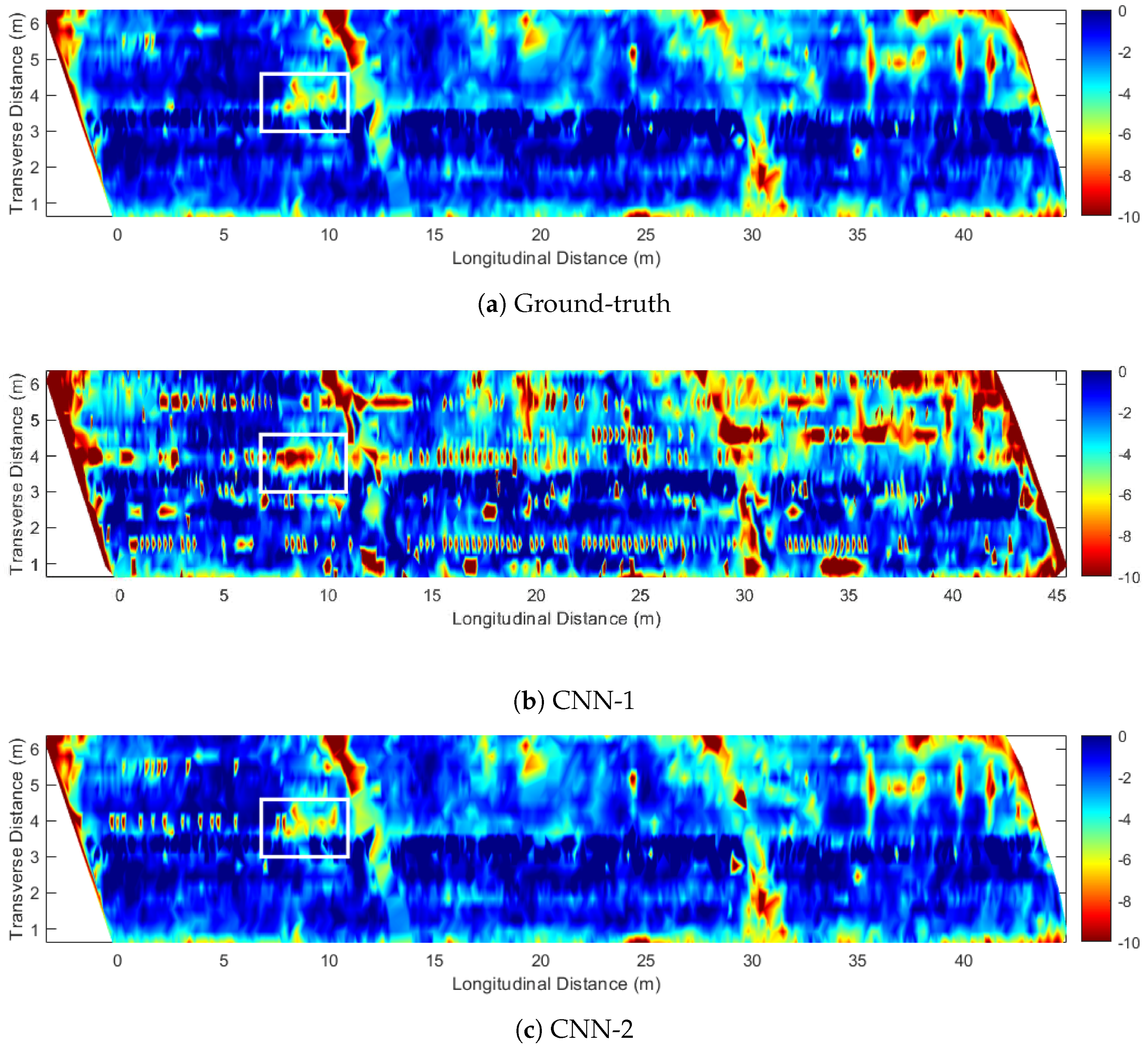
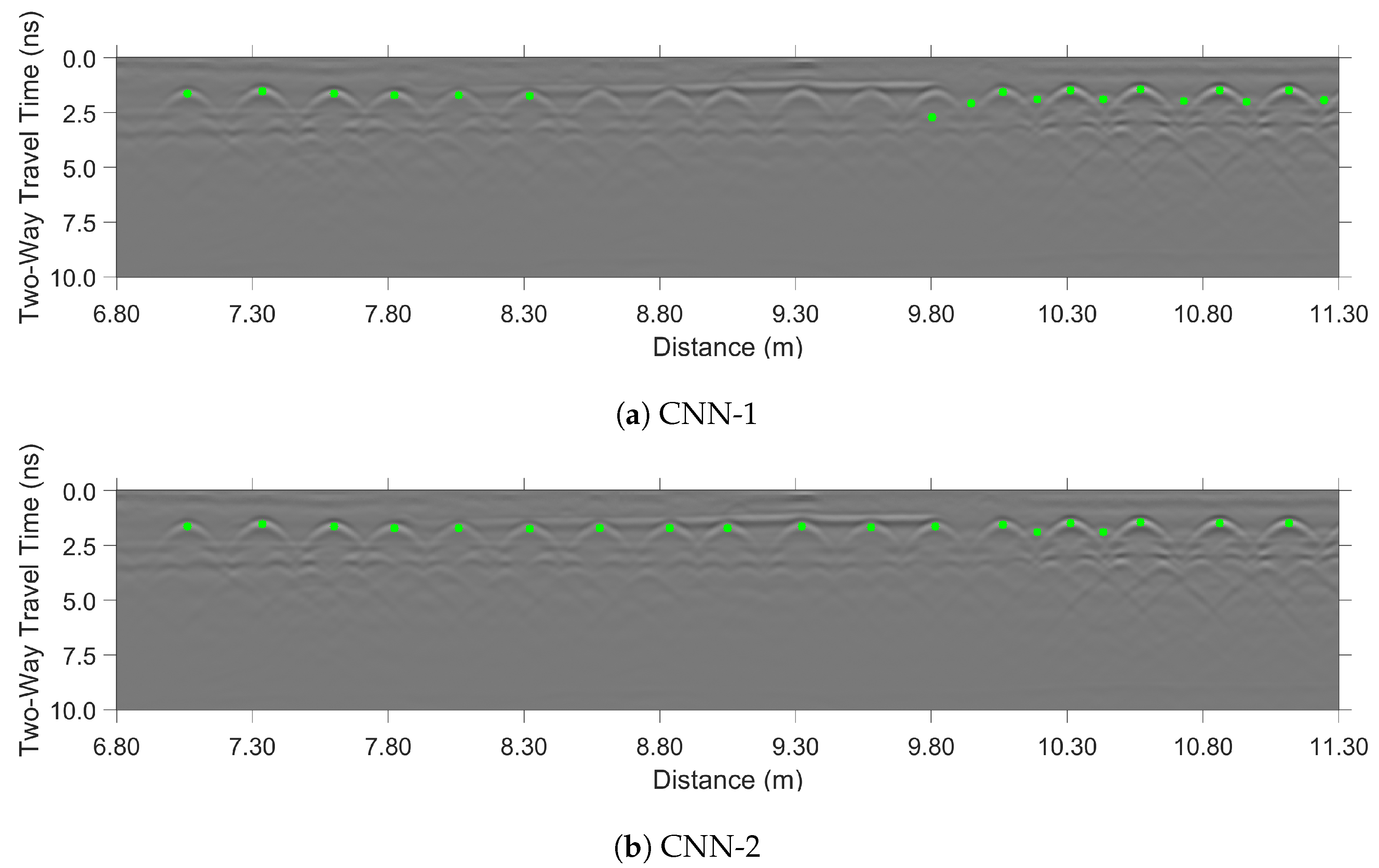



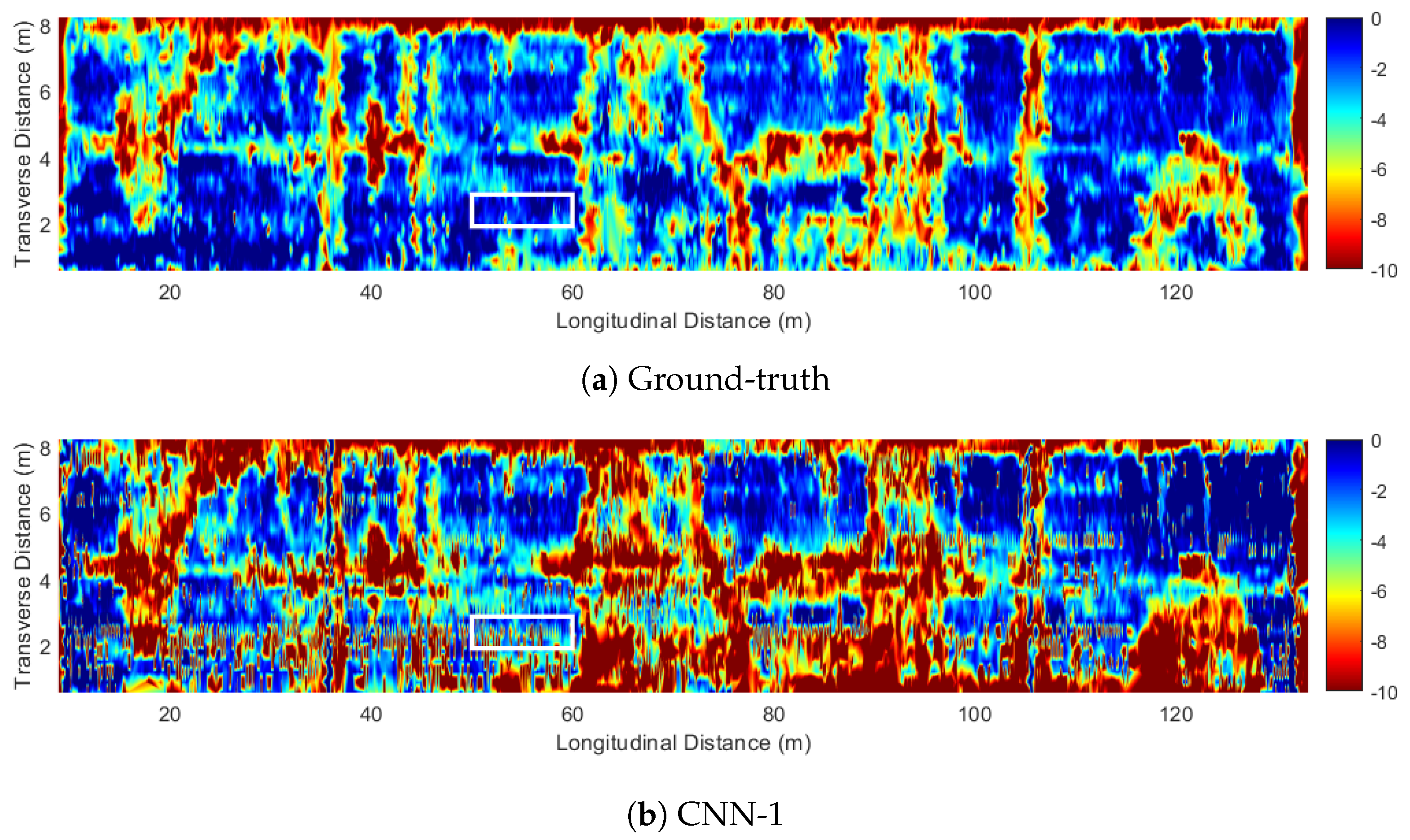


| CNN-1 | ||||||
|---|---|---|---|---|---|---|
| Bridge ID | True Picks | False Picks | Misses | Precision | Recall | F1-Score |
| S075 17596 | 4567 | 485 | 140 | 90.40% | 97.03% | 93.60% |
| S077 05693R | 2714 | 742 | 369 | 78.53% | 88.03% | 83.00% |
| S092 46282R | 12,849 | 5073 | 3813 | 71.69% | 77.12% | 74.31% |
| CNN-2 | ||||||
|---|---|---|---|---|---|---|
| Bridge ID | True Picks | False Picks | Misses | Precision | Recall | F1-Score |
| S075 17596 | 4569 | 19 | 138 | 99.59% | 97.07% | 98.31% |
| S077 05693R | 3035 | 18 | 48 | 99.41% | 98.44% | 98.92% |
| S092 46282R | 16,473 | 302 | 189 | 98.20% | 98.87% | 98.53% |
Disclaimer/Publisher’s Note: The statements, opinions and data contained in all publications are solely those of the individual author(s) and contributor(s) and not of MDPI and/or the editor(s). MDPI and/or the editor(s) disclaim responsibility for any injury to people or property resulting from any ideas, methods, instructions or products referred to in the content. |
© 2025 by the authors. Licensee MDPI, Basel, Switzerland. This article is an open access article distributed under the terms and conditions of the Creative Commons Attribution (CC BY) license (https://creativecommons.org/licenses/by/4.0/).
Share and Cite
Pashoutani, S.; Roudsari, M.; Zhu, J. Dual-Channel CNN-Based Framework for Automated Rebar Detection in GPR Data of Concrete Bridge Decks. Constr. Mater. 2025, 5, 36. https://doi.org/10.3390/constrmater5020036
Pashoutani S, Roudsari M, Zhu J. Dual-Channel CNN-Based Framework for Automated Rebar Detection in GPR Data of Concrete Bridge Decks. Construction Materials. 2025; 5(2):36. https://doi.org/10.3390/constrmater5020036
Chicago/Turabian StylePashoutani, Sepehr, Mohammadsajjad Roudsari, and Jinying Zhu. 2025. "Dual-Channel CNN-Based Framework for Automated Rebar Detection in GPR Data of Concrete Bridge Decks" Construction Materials 5, no. 2: 36. https://doi.org/10.3390/constrmater5020036
APA StylePashoutani, S., Roudsari, M., & Zhu, J. (2025). Dual-Channel CNN-Based Framework for Automated Rebar Detection in GPR Data of Concrete Bridge Decks. Construction Materials, 5(2), 36. https://doi.org/10.3390/constrmater5020036






